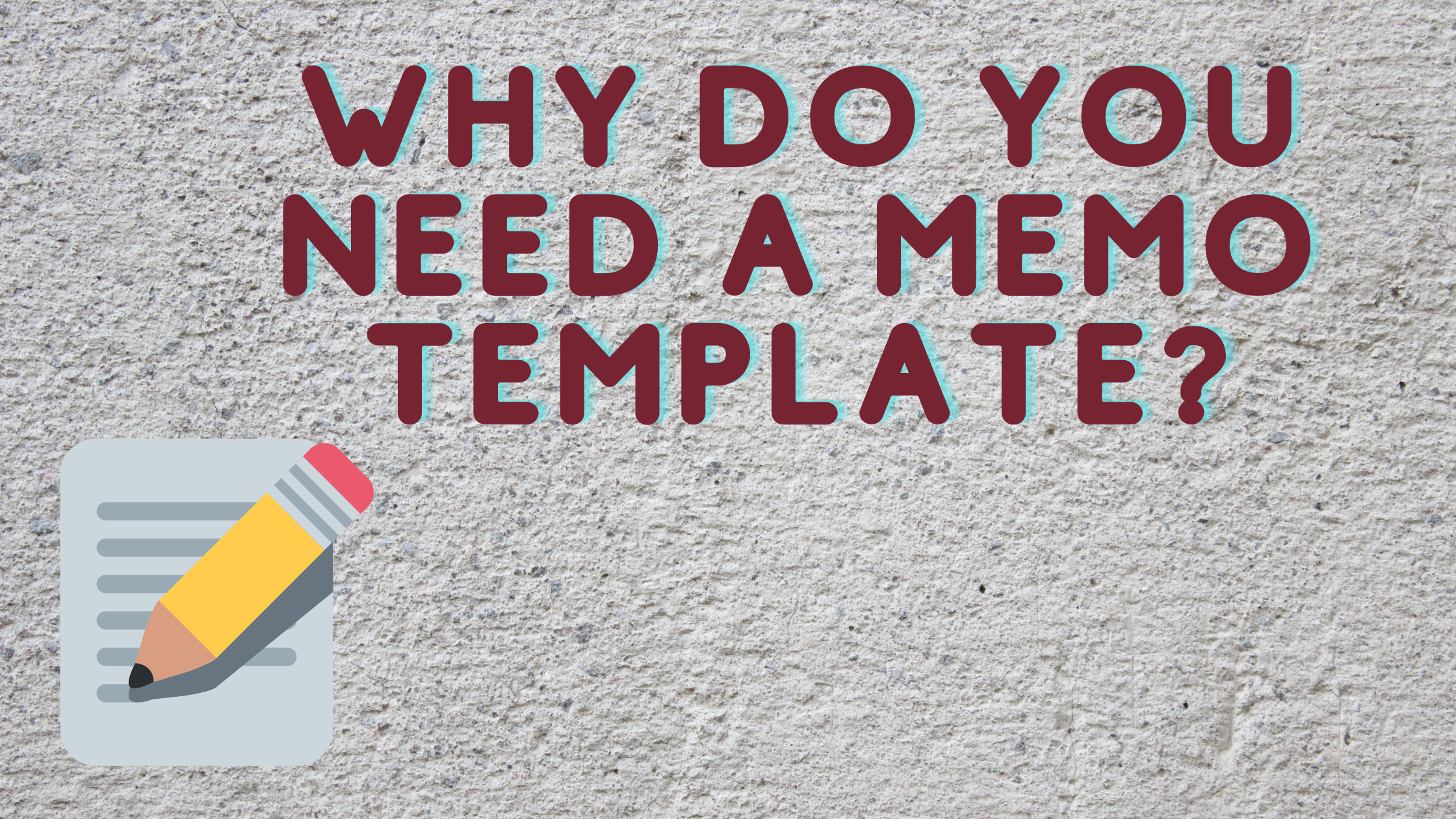
What is a Memo?
Memos (memorandums or “reminders”) are used for internal communication regarding procedures or official affairs within an organization. Unlike email, you can use a memo to send messages to a large group of employees. To an entire department or every employee in your company.
There are various types of notes, such as informational notes, Requirement notes, Confirmation notes, Periodic reporting notes, Suggestion notes, and Findings notes. Memo templates are of great help. Let us know more about the purpose of a memo.
Why do you need a Memo?
Sometimes you need to write a memo to inform your employees of upcoming events or to announce internal changes. Notes aim to bring immediate attention to tasks, projects, occurrences, or issues that may affect your business or personal life. In addition, memorandums are shared to keep readers informed of new information and apply to various communities and businesses.
Communities can use notes to educate people about public safety guidelines, promote various events, and raise awareness of issues that affect their lives.
Organizations can use memos to share information about new and updated policies and procedure changes and persuade employees to take action, attend meetings, conventions, or celebrations that celebrate organizational milestones.
Format of a Memo template
There are many different ways to organize your memo, but most notes share the same formatting elements. Feel free to customize the memo template to match the tone and content of the message you want to send. Look here for a Memo format. This is the same for a business memo template too.
1. Subject: First off, you can be on the right foot by starting your Memorandum with a great subject line. The subject of the best note should be as specific as possible.
For example, instead of labeling a memo letter “Company Event,” the subject might be “Annual Christmas Party: Dates and Details.”
A clear subject line will let people know exactly what the note is about before opening it. Employees will find it easier to find notes because they won’t have multiple messages with the same subject in their inboxes.
2. Headline: There are several important elements to include in your memo heading. Always know the date, who the note is for, and from whom. This information provides context about the content of the message.
3. Body Message: The main body of the memo describes the message’s main purpose. Use the introductory paragraph to state exactly what the rest of the document is about. Keep the opening section short of conveying your message most effectively.
- Paragraph 1: At the beginning of this paragraph, use statements such as “I am writing to inform you” or “I am requesting information”. This first paragraph should contain the most essential information of your note.
- Paragraph 2: The second paragraph allows you to provide additional details and delve deeper into the topic.
- Paragraph 3: The third paragraph sends the request. An example of this is asking a department for feedback on a project or giving a deadline for a company event.
4. Attachments: Some notes do not have questions linked to the information they are presenting. If so, you can use this space to thank your colleagues for their time. Before sending a note to a colleague, check your company’s mass communication policy. Some companies require additional steps.
5. Signing off: Add your organization’s logo, company name, or standardized font size. You may also need to obtain approval or permission before sending.
Tips to Write a Memo that is excellent
Now that you know what must be included in your notes and memos, it’s time to get the right tone and format. Given below are some tips to keep in mind when writing effective business memos.
- Keep your tone professional: Always keep your style professional, but feel free to adjust it to suit your audience and purpose.
- Avoid acronyms and abbreviations: Write acronyms and abbreviations so that all recipients can understand your message.
- Keep your notes on one page: Split your copy into three paragraphs to get your point across concisely.
- Use attachments as needed: Add attachments and flyers to give your notes additional context. Think of your readers. Change the email message according to who you are writing.
- Keep formatting consistent: Maintain the ssimilar font, paragraph structure, punctuation, and grammar throughout your text.
- Be clear and concise: State your request or announcement at the beginning of the leaflet.
- State Facts: When writing business documents, stick to facts and avoid personal biases. By following these tips given below and knowing what to include, you’ll be able to create professional, concise notes repeatedly.
These tips are sure to help you write an effective memo.
What makes your business Memo stand out?
Your message’s goal or purpose depends on how you write your memo. For example, let’s say you write an informational memo to get your employees’ attention to information, and you want your requirements memo to be more compelling. Similarly, notes containing survey results may need to maintain a neutral tone, while notes having reports can include relevant data and tables. All types of notes follow a similar format, but there may be some differences in the body of the message. For example, if records should be included, you can write the main message as plain text or include rows, columns, or tables.
The tone depends on the purpose of the note. Notes are primarily used for internal communication so that you can keep a friendly tone. However, it doesn’t have to be overly formal, but it should still sound professional. Maintain objectivity and make sure your notes are free of personal bias. Please note that memos often relate to company policies and procedures and may carry legal titles.
Notes should be clear and concise. A couple of short paragraphs explaining the body of the memo are usually enough, Depending on the note’s message. However, if you need to write a long letter, ensure the entire note does not exceed one page.
Always be mindful of the audience in mind when writing your notes. All recipients should have no problem understanding it. Create acronyms and abbreviations, and explain technical terms where they cannot be avoided entirely.
The Memorandum should be clear and concise. This classic form of corporate communication is always short and sweet. However, fast doesn’t mean “a few lines,” and it’s quite possible that your note will be a few pages or longer. The idea is that excess material should be eliminated.
A memo, as a characteristic, has a specific, defined purpose. In addition to being sent, a memo may be requested to change some aspects of the business, which may involve some risks. Therefore, it is common for subordinates to look for notes to protect themselves.
Refer to this link for a sample Memo template

